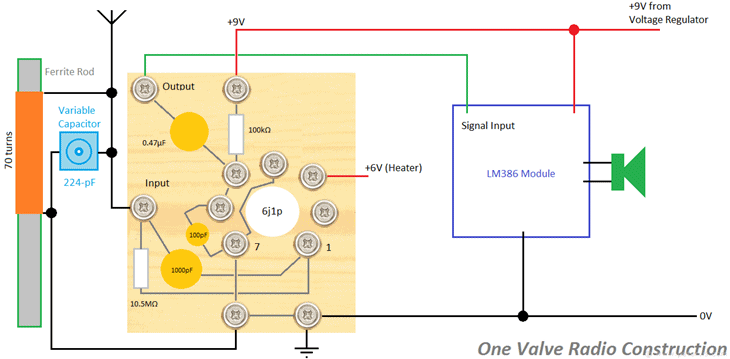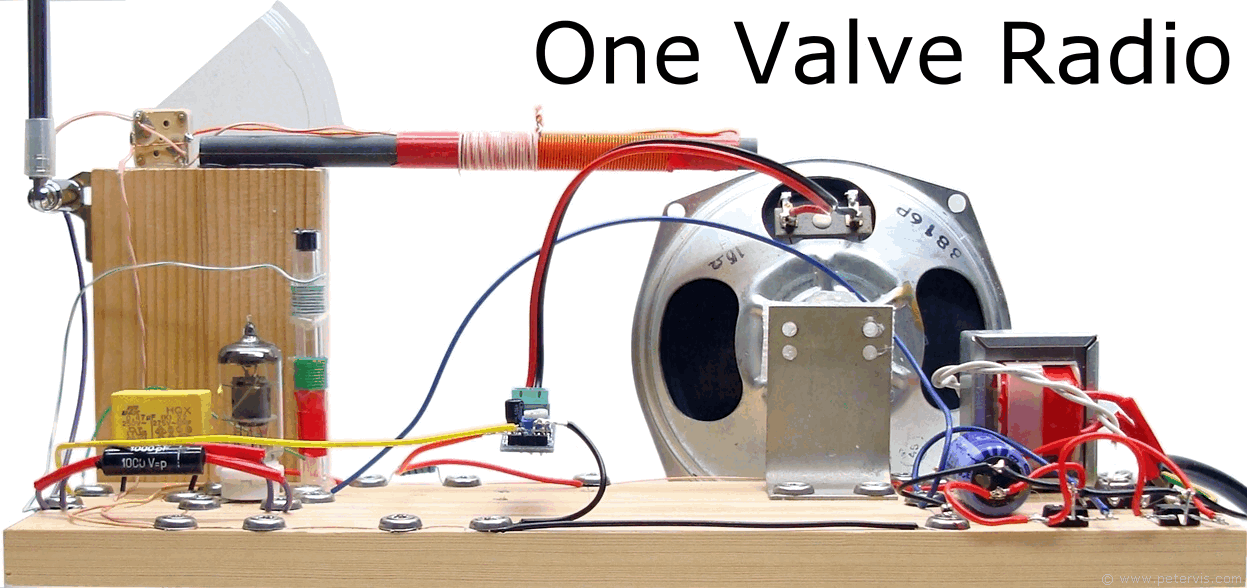One Valve Radio Construction


The construction of the radio apparatus is on an off-cut piece of wood measuring 30 cm × 9 cm (thickness 15 mm), which is often available for free from hardware stores. If you are procuring for a school project, then a nice piece of pine wood, 9 cm wide usually costs around three pounds, and you can get many pieces of length from it. The vertical mast for holding the ferrite rod and aerial is a piece of wood 10 cm × 6 cm, and thickness 2 cm.
My woodwork teacher always said that I had a good sense of practical ability, so I will not be showing how to make a dovetail joint for connecting the mast piece to the base, and instead we use modern techniques such as a hot glue gun as it is cheap and fast. Of course, if he was alive, then he would not approve of this technique... Glue guns are available very cheaply at online auction sites and useful for making robust constructions. In this project, the vertical wooden mast piece connects to the base piece with some hot melt glue, and should the hobbyist feel inclined to instead drill holes and use screws to fix it then that too is an option.

The wooden mast is a very important aspect of this project, because it allows us to organise the tank apparatus away from the main circuit, whilst simultaneously keeping tank components together. It is vital that the wires from the ferrite coil are short, and therefore the tuning capacitor has to be nearby. I soldered the ferrite coil wires directly to the tuning capacitor. One end of the parallel LC circuit then connects to the telescopic aerial, whilst the other end connects to the 0 V/ground rail.
For securing the variable capacitor, it is extremely important not to place metals nearby as they can interfere with the operation of the component. Instead of using a metal bracket and screws, a cheap and quick option is to use a blob of some hot-melt glue. I am using the mast piece as staging post to raise the component somewhat. For the tuning knob, I am using ¼-piece of the plastic clear lid from a yoghurt pot. It is possible to use a punch to make a nice clean hole for the shaft. The shaft comes through the hole, and a blob of clear hot melt glue then secures it to the plastic lid.
A small blob of hot melt glue also secures one end of the ferrite rod to the wooden mast. I would avoid the use of metal brackets or screws near the tank components because metal has a way of interfearing with proper operation, and we need the RF signal to be the strongest possible.
This Article Continues...
One Valve Radio6j1p
One Valve Radio Circuit
One Valve Radio Construction
One Valve Radio Regeneration Coil
One Valve Radio Power Supply
Ferrite Rod Antenna Coil
